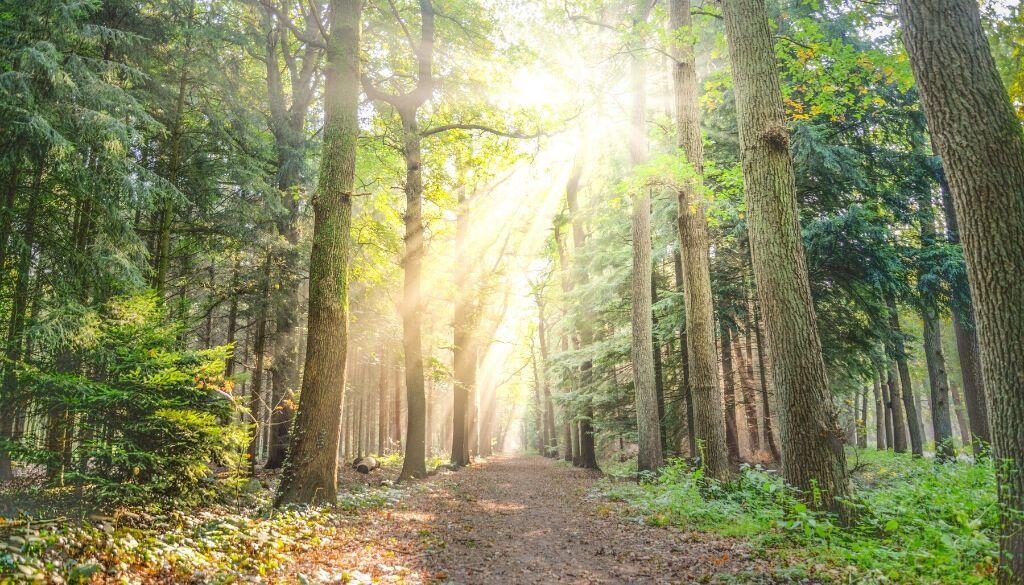Experts Urge Seniors to Spend More Time in Nature
Though we are all creatures of nature, these days we’re more likely to find ourselves removed from the natural world. This might be by choice, as we opt to spend our hours indoors, under artificial light, staring into one glowing device or another. Or, we might have little choice, as is sadly the case for many seniors living with mobility-limiting health challenges.
An important University of Minnesota study from 2015 revealed that spending time in green spaces — and in “blue spaces,” such as rivers, oceans, or ponds — is very important for the health and well-being of older adults. Lead author Jessica Finlay said, “We zoomed in to everyday life for seniors between the ages of 65 and 86. We discovered how a relatively mundane experience, such as hearing the sound of water or a bee buzzing among flowers, can have a tremendous impact on overall health.”
Why is getting out in nature so important? Finlay and many other experts offer reasons seniors should spend more time in the great outdoors.
Encourages Physical Activity
Finlay pointed out, “Accessibility to everyday green and blue spaces encourages seniors to simply get out the door. This in turn motivates them to be active physically, spiritually, and socially, which can offset chronic illness, disability, and isolation.” Spending time outdoors fights boredom and raises self-esteem. Finlay’s team also noted that outdoor spaces encourage multigenerational interactions, which are emotionally nourishing for most seniors.
Increases Energy
A University of Rochester study found that being outside makes us feel more energetic and alive! According to psychology professor Richard Ryan, “Nature is fuel for the soul. Often when we feel depleted, we reach for a cup of coffee, but research suggests a better way to get energized is to connect with nature.” Ryan’s research found that “90 percent of people report increased energy when placed in outdoor activities.”
Fights Depression
Seniors are at higher risk of depression, which can lead to a spiral of decline if not addressed. Spending time in a natural setting has long been “prescribed” to boost our mood. We are inspired by the beauty of nature, by the clean air, sounds and sights. A 2014 University of Michigan study found that going for group walks in a natural setting could be an alternative to medications for older people who are dealing with stressful life circumstances, such as loss of a loved one or serious illness. The University of Minnesota study noted that waterfront areas are especially comforting for those who are grieving, providing a sense of spiritual connectedness with deceased loved ones.
Boosts Memory
Another University of Michigan study, published by the Association for Psychological Science, found that interacting with nature improved memory performance and attention span by 20 percent. The authors speculated that this is in part because natural environments are far less stressful. Urban environments, they say, feature “a relatively complex and often confusing pattern of stimulation, which requires effort to sort out and interpret.” Natural environments, however, “permit us to replenish our capacity to attend and thus have a restorative effect on our mental abilities.”
Improves Physical Health
Spending time in nature has been shown to boost the immune system. And a 2015 University of Chicago study showed that even living in a neighborhood with lots of trees can help improve our cardiovascular and metabolic health, as well as lowering our blood pressure and stress levels. Study author Marc Berman explains that urban trees improve air quality, and provide a more inviting environment for exercise. Said Berman, “We have known that the natural environment can improve health, but this study shows for the first time how big that impact can be.”
Lengthens Life
A 2016 study from Harvard University found that no matter their age, socioeconomic status, or race, people whose homes are surrounded by vegetation lived 12 percent longer. Among the 100,000 women in the study, those who lived surrounded by trees and plants had a 34 percent lower rate of death from respiratory illness, and a 13 percent lower rate of cancer death. Said Harvard epidemiology researcher Peter James, “We know that planting vegetation can help the environment by reducing wastewater loads, sequestering carbon, and mitigating the effects of climate change. Our new findings suggest a possible co-benefit — improving health — that presents planners, landscape architects, and policymakers with a potential tool to grow healthier places.”
Explore the Wild or Park
Seniors don’t need to go on a wilderness trek to benefit from nature. More communities today offer outdoor programs to meet the needs of older adults. If the area where you live is blessed with areas of natural beauty, take your loved one on a day trip to a beach or lake, or perhaps for a day of fishing with the grandkids. An outdoor concert, a picnic, or a short walk through a park or arboretum also can be nourishing for the spirit. If your loved one has mobility challenges, find out about natural habitats in your area that feature boardwalks or accessible trails. If there’s a fountain nearby, sit and enjoy the water sounds. Find sensory gardens full of smells and sounds if your loved one is visually impaired. You can even incorporate these principles in your own garden. If your loved one lives in a nursing home or other senior living community, sit outdoors during visits when the weather permits. These days, you are likely to find that the facility embraces the Greenhouse model, bringing the outdoors indoors with plants and pets.
Make Natural Spaces a Priority
There’s much we can do to address the nature deficit for elders in our communities. University of Minnesota’s Jessica Finlay says, “We don’t just need a playground for children. We also need sheltered benches for the grandparents who watch them.” Deborah Cohen, Senior Natural Scientist at the RAND Corporation, urges public agencies to make parks more senior-friendly, with walking loops and classes geared toward older people. “It’s really sad that so few seniors are using our public parks,” she said. “We need to make changes to attract older people to parks to exercise and stay active, especially with the increasing rates of chronic disease among older people and as our nation’s population grows older.”
Keep Up To Date On Neighbor News and Blogs
Find all of The Neighbors of Dunn County’s current news here.
Read more: Aging in Stride




